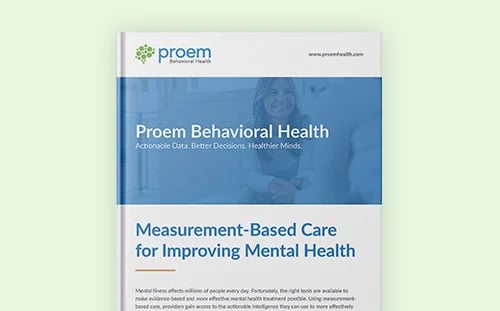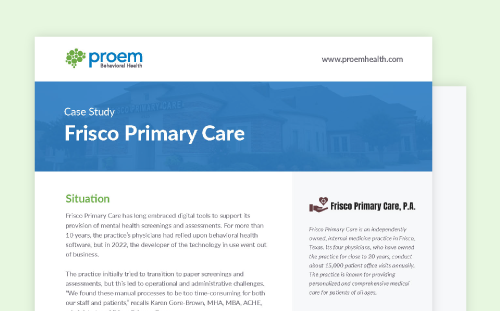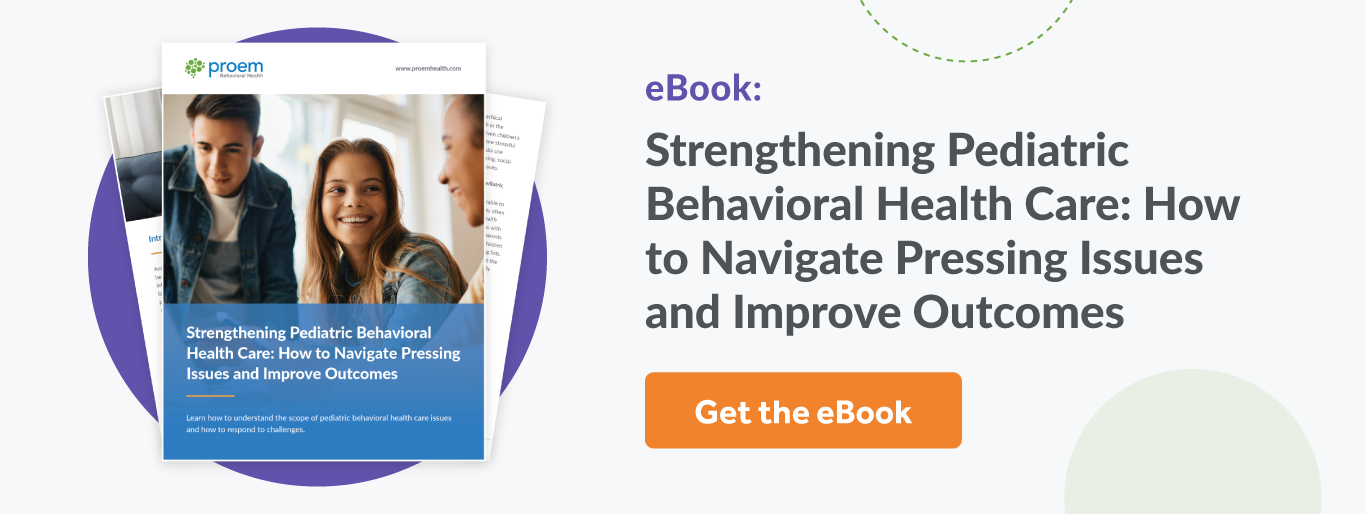In March 2023, the Emergency Care Research Institute (ECRI) identified the pediatric mental health crisis as the year’s top patient safety concern. ECRI supported its declaration by citing rising rates of anxiety and depression, a spike in adolescent suicide attempts and increased exposure to mental health risk factors.
.jpeg?width=768&height=384&name=AdobeStock_600601232%20(1).jpeg)
Adverse childhood experiences, or ACEs, account for many of those factors. Although they’re not the only factor fueling the pediatric mental health crisis, they’re one of the most addressable on an individual level.
What Are Adverse Childhood Experiences?
The Centers for Disease Control and Prevention (CDC) defines ACEs as potentially traumatic experiences before age 18. “Potentially traumatic” refers not only to life-threatening experiences but also to experiences that threaten a child’s psychological safety and stability.
The American Psychological Association lists the following as potential ACEs:
- Physical, sexual and emotional abuse
- Physical and emotional neglect
- Household exposure to substance abuse, mental illness, violence or incarceration
- Exposure to community violence and discrimination Poverty
- Bullying
In one study, 81% to 98% of children with ACEs reported two or more such experiences. For example, more than half of children with a history of mistreatment also had parents with mental health issues.
The Importance of Addressing ACEs in Pediatric Populations
According to the National Survey of Children’s Health, approximately one in three U.S. children have at least one adverse childhood event in their history. By identifying these experiences, clinicians take the first step to prevent adverse outcomes.
How ACEs Affect Children’s Brain Development
Stability and responsive caregiving are essential to healthy brain development. Without a stable environment and the support of responsive caregivers, children’s brains lack the ingredients for healthy development.
For example, studies have shown that abuse and neglect lead to reductions in amygdala volume. More severe mistreatment correlates with more significant deficits, increasing a child’s risk of behavioral and emotional regulation problems.
ACEs exposure also affects the development of the hippocampus, which is a crucial regulator of learning, memory and stress responses. Again, the severity of the adverse experience correlates directly with deficit severity.
Finally, children with ACEs are more likely to have inhibited prefrontal cortex development. Effects on the orbital cortex, which regulates experienced-based decision-making and emotional regulation, are particularly pronounced in children with ACEs.
ACEs and Negative Childhood and Adolescent Outcomes
Given the role of the affected brain regions in cognitive and emotional processing, it’s not surprising that a strong connection exists between ACEs and mental health. The previously discussed research noted an increased risk of the following:
- Memory and learning challenges
- Cognitive delays
- School adjustment and achievement problems
- Attention and behavior regulation issues
- Attention deficit hyperactivity disorder (ADHD)
- Reduced emotion and behavior regulation capacity
- Relationship difficulties
Children with histories of ACEs are also more susceptible to increased stress reactivity due to harmful effects on the amygdala and hippocampus. Children who experience excessive stress or fail to receive parental soothing become less able to cope with stressors in adulthood. In some cases, these may increase the risk of posttraumatic stress symptoms later in life.
As the psychiatrist Dr. Lloyd Sederer explained to Psychology Today, these harmful effects occur because ACEs cause a chronic stress response in the brain. Young people can cope with occasional temporary stress, but chronic stresses overwhelm the brain’s ability to respond adaptively.
An overwhelmed brain may show itself in any of the ACEs mental health challenges described above. In one study, children’s risk of developmental delay or mental health disorders increased up to 2.5 times when the child experienced severe household stressors.
Children with ACEs are also more likely to engage in dangerous behaviors, such as substance use, unprotected sex and poor personal care habits. These behaviors can put a child at risk of serious harm.
ACEs Adverse Childhood Experiences: How to Begin Addressing This Issue
To improve the outcome of children with ACEs, we must strengthen children’s behavioral therapy and evaluation. That includes a thorough assessment of ACEs and a commitment to supporting the child.
As Dr. Sederer noted, “Preventing abuse, neglect and seriously troubled households are among the most daunting of social challenges to try to tackle. Yet their prevalence, and the suffering and cost these problems produce, are the measure of the necessity for our families and societies to find ways to intervene — and spare youth from a life marred by pain and dysfunction.”
The worthwhile first step to address ACEs is to implement universal screening for adverse childhood experiences and follow up with appropriate intervention. In a recent study published in JAMA Network Open, children who screened positive for ACEs and received personal intervention were 7.5% more likely to attend behavioral health appointments.
Evaluating an Adverse Childhood Experiences Test: Best Practices for Assessment
For pediatric healthcare providers, a quality adverse childhood experiences test is an important tool for achieving quality interventions. An ACEs questionnaire should be evidence-based, trauma-informed and tied to action steps.
Screening measures generally range from 8 to 19 items, though some practitioners choose to use “summary scores,” in which the provider doesn’t see which items the patient identified. One 2022 study noted that this type of scoring may improve disclosure and family participation.
In addition to a quality adverse childhood experiences questionnaire, providers need a clear assessment workflow and training for all providers on how to manage screening. As the same 2022 study stated, “Challenges with workflow and patient refusal to complete screenings were identified as reasons for poor completion rates. Facilitators to higher screening rates included providing all staff training, organizational support and developing workflows regarding administration of the ACEs screener and the follow-up plan.”
Providers must consider how open their patients and families may be to such questionnaires. Providers should be sensitive in how they approach discussions of ACEs and work to establish and nurture an environment of trust.
How Proem Helps Providers Address Adverse Childhood Experiences
Digital tools have made ACEs mental health screenings more accessible and patient-friendly for today’s pediatric practices. Such pediatric screenings allow providers to screen patients privately or in-office, improving families’ comfort levels and helping to enhance compliance.
Proem’s pediatric assessment tools are evidence-based, clinically proven and smoothly integrated into most workflows. The Proem platform includes assessment and follow-up questionnaires, specialized next-step suggestions and detailed analytics. With this comprehensive yet convenient system, you can set up a standardized screening process tied to actionable help for children in need.
With Proem’s solution, your practice will uncover mental disorders earlier in your patients’ lives and play a greater role in reducing the effects of ACEs and likelihood of future complications. Contact us today to learn how.





.png)
.jpeg)








